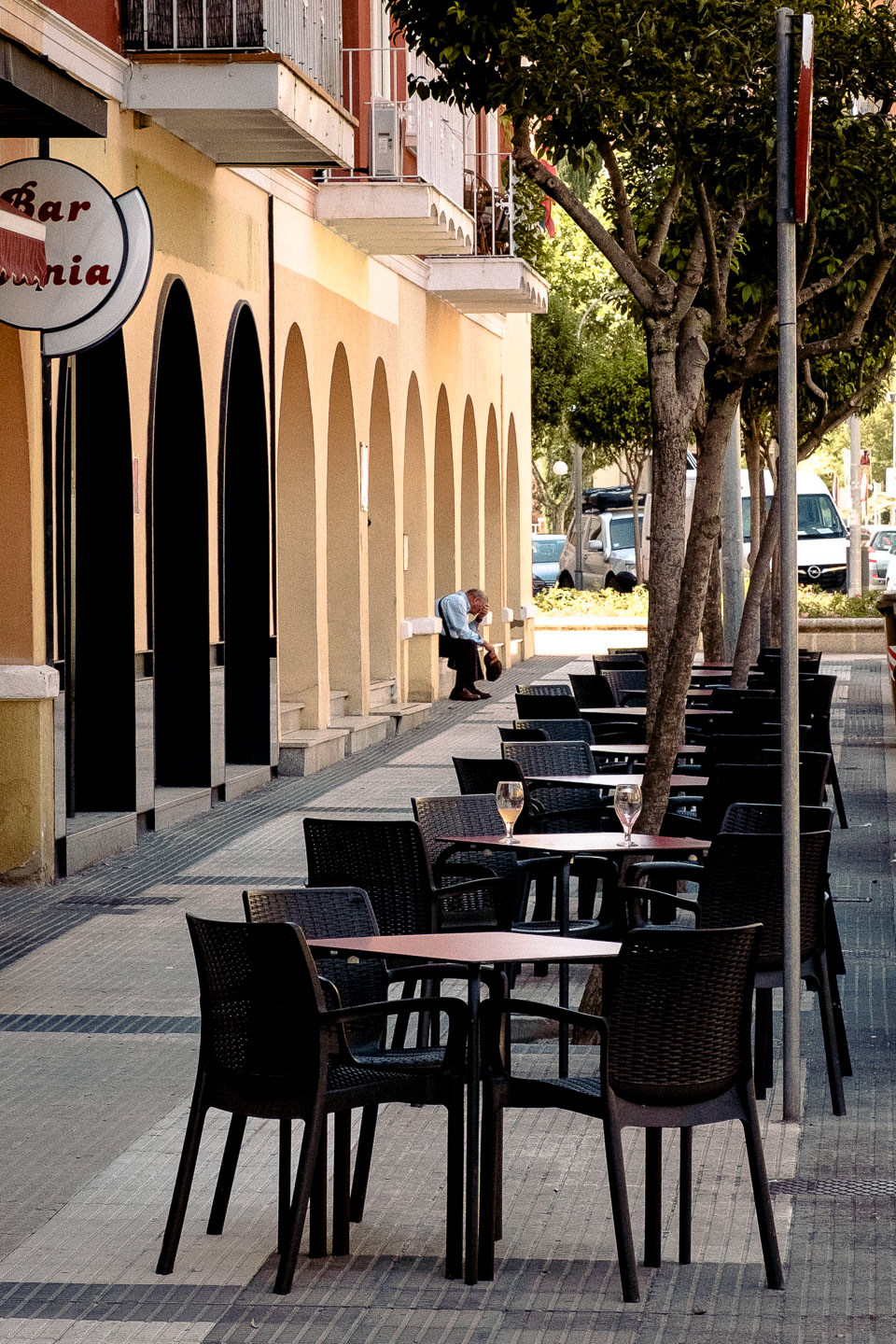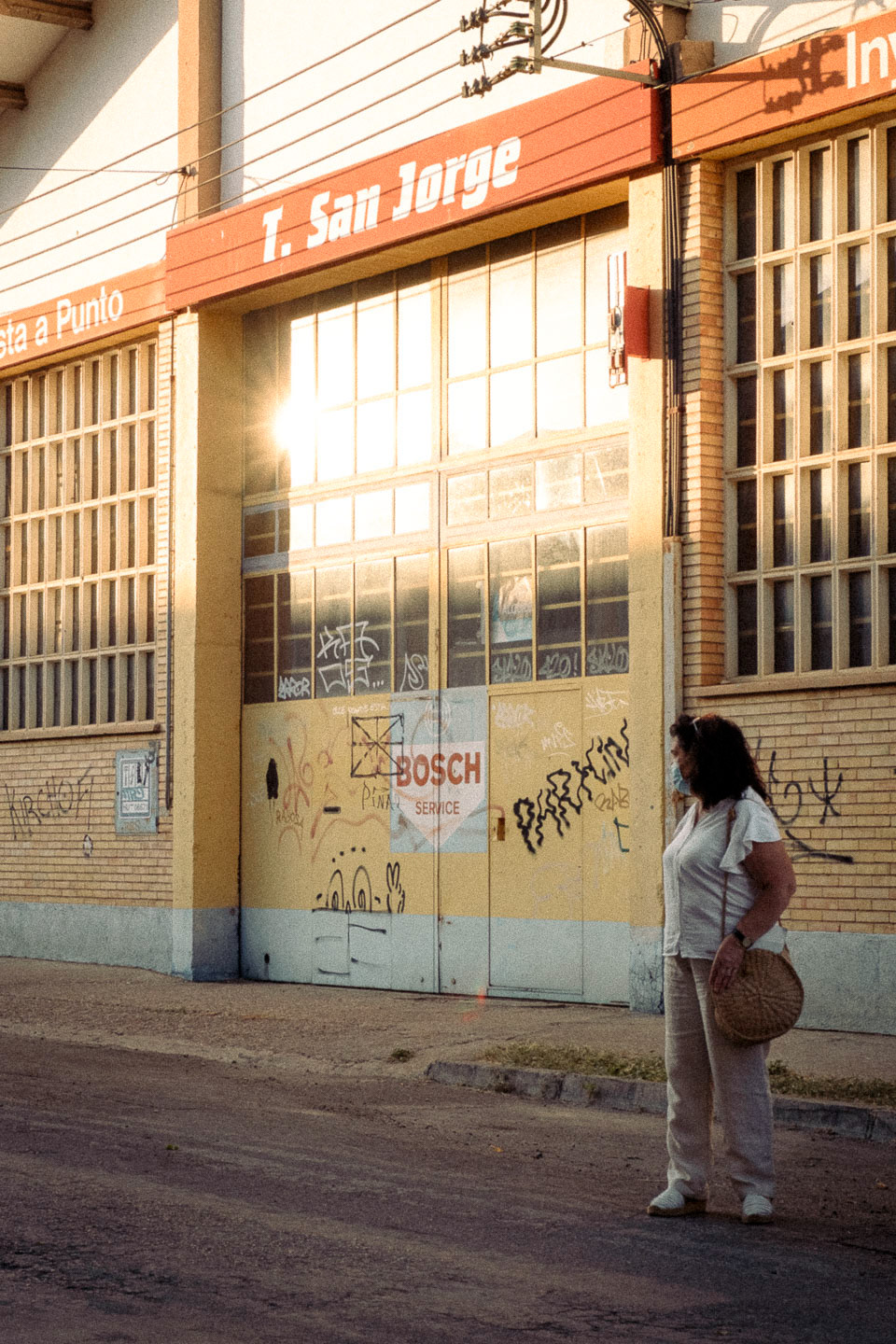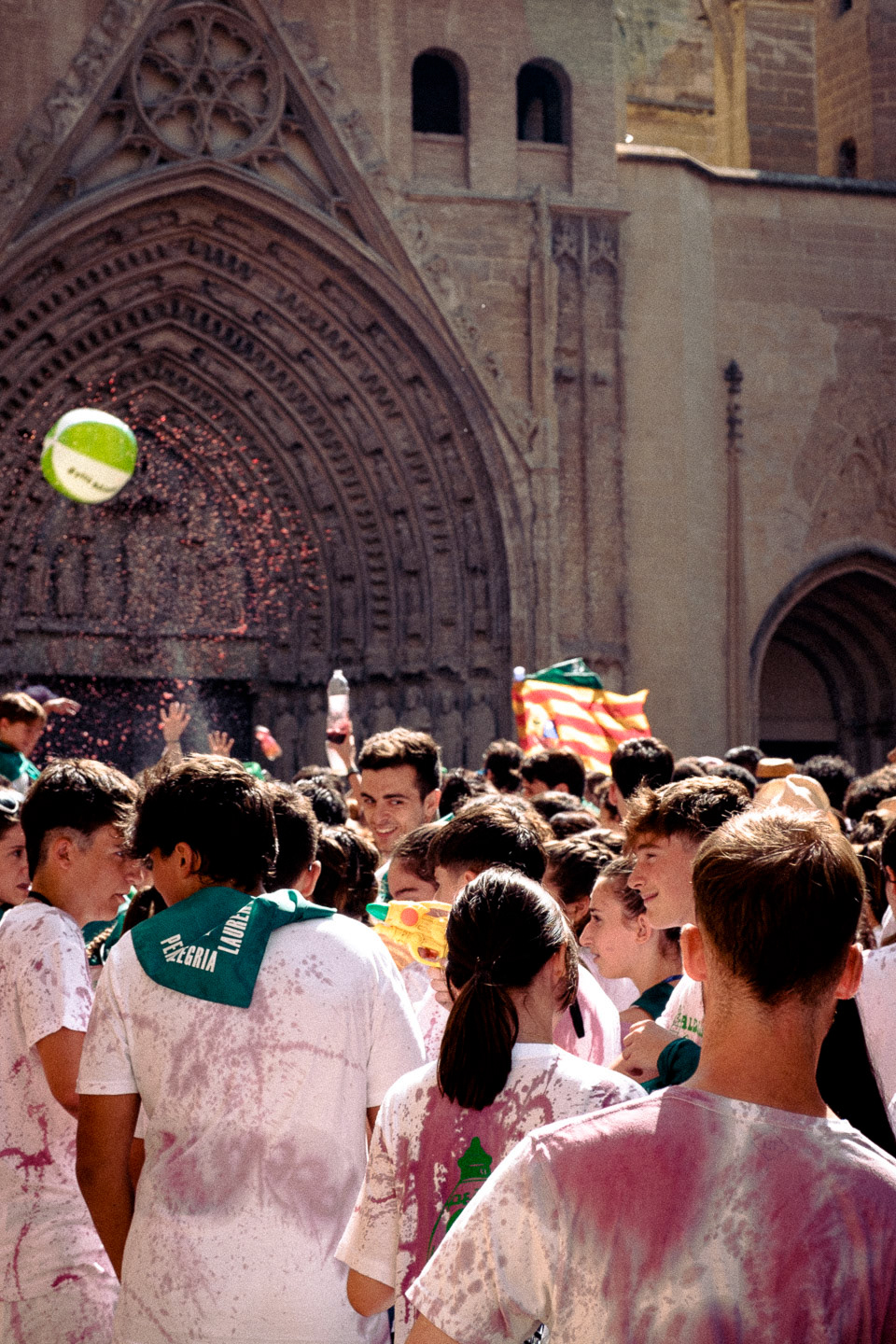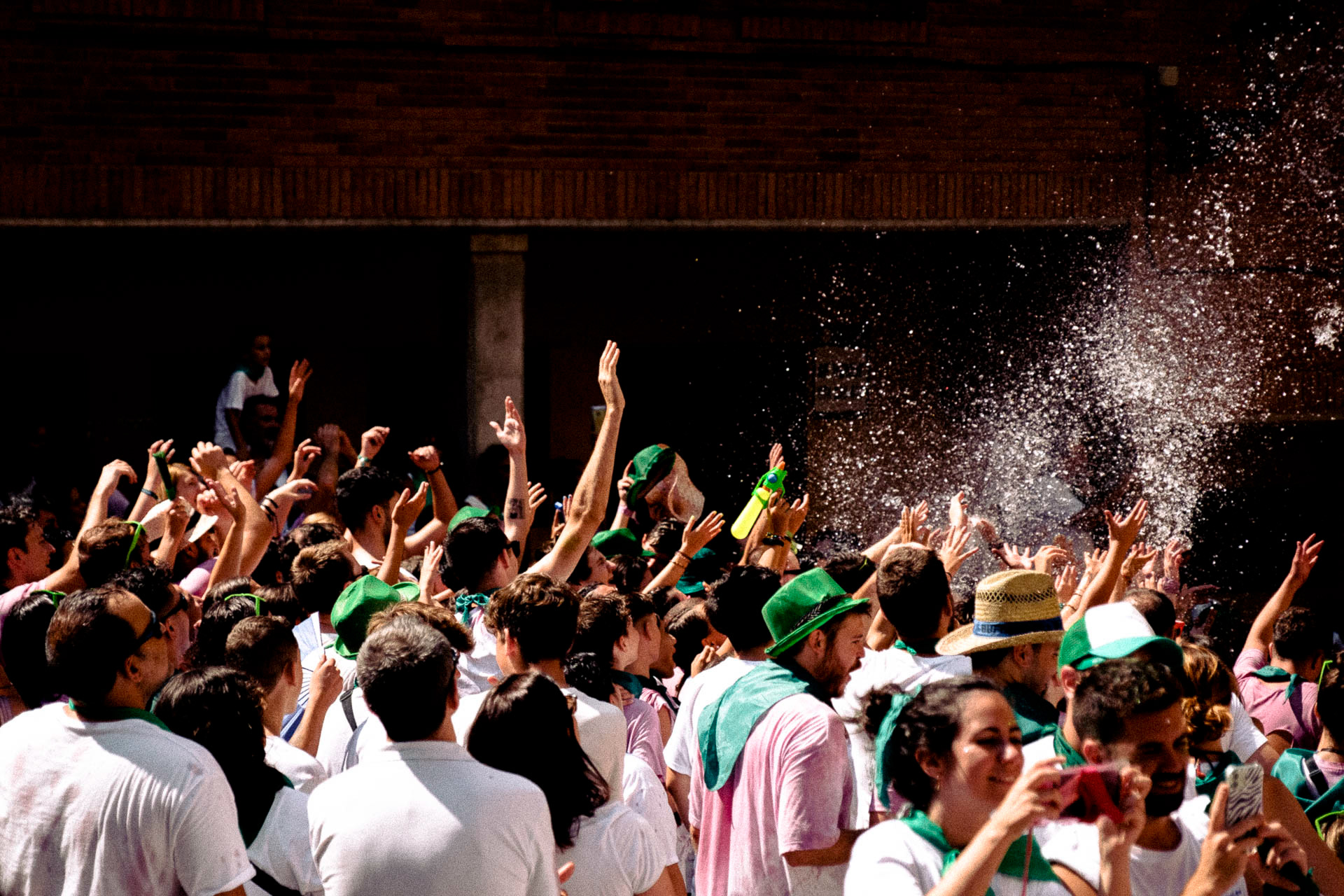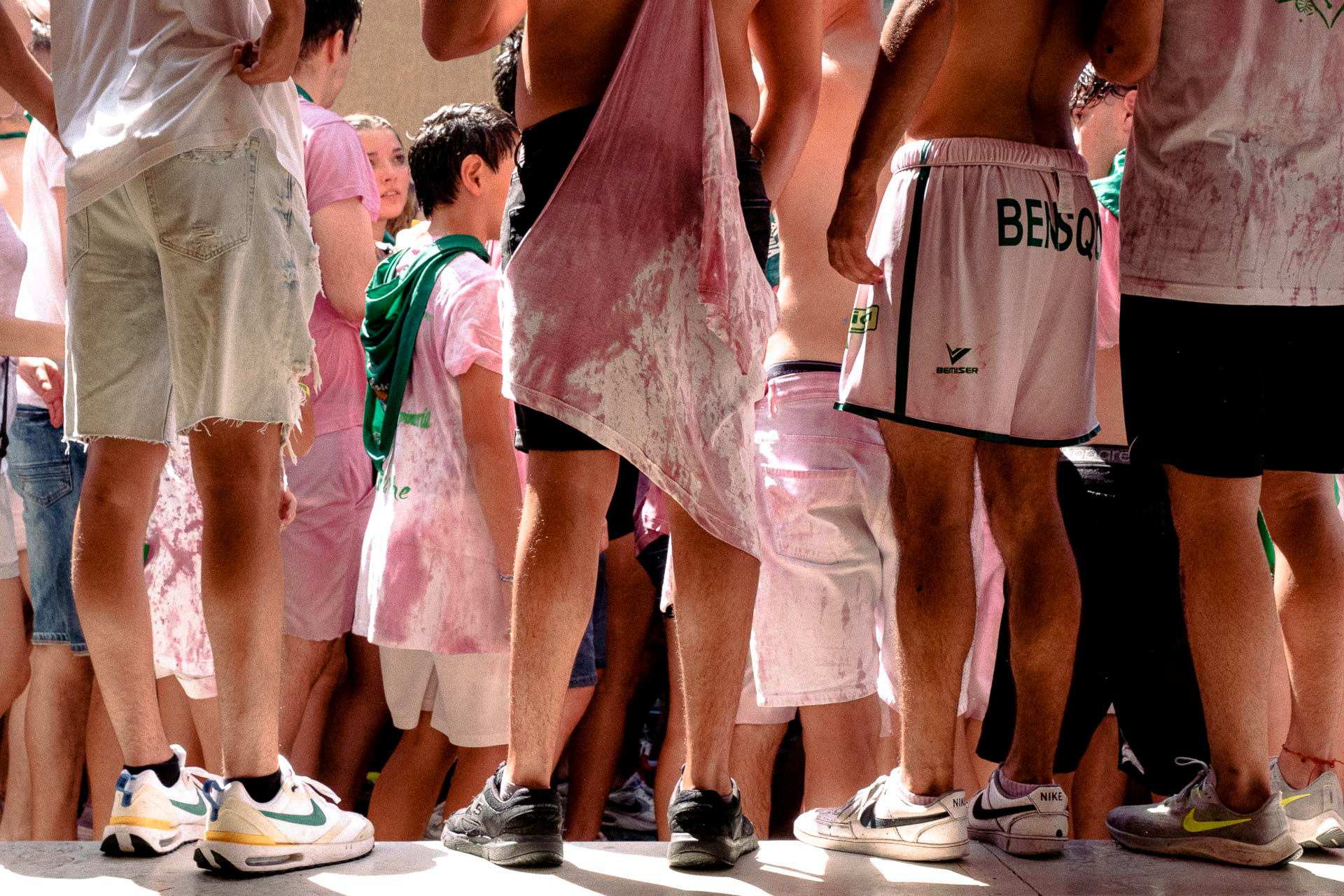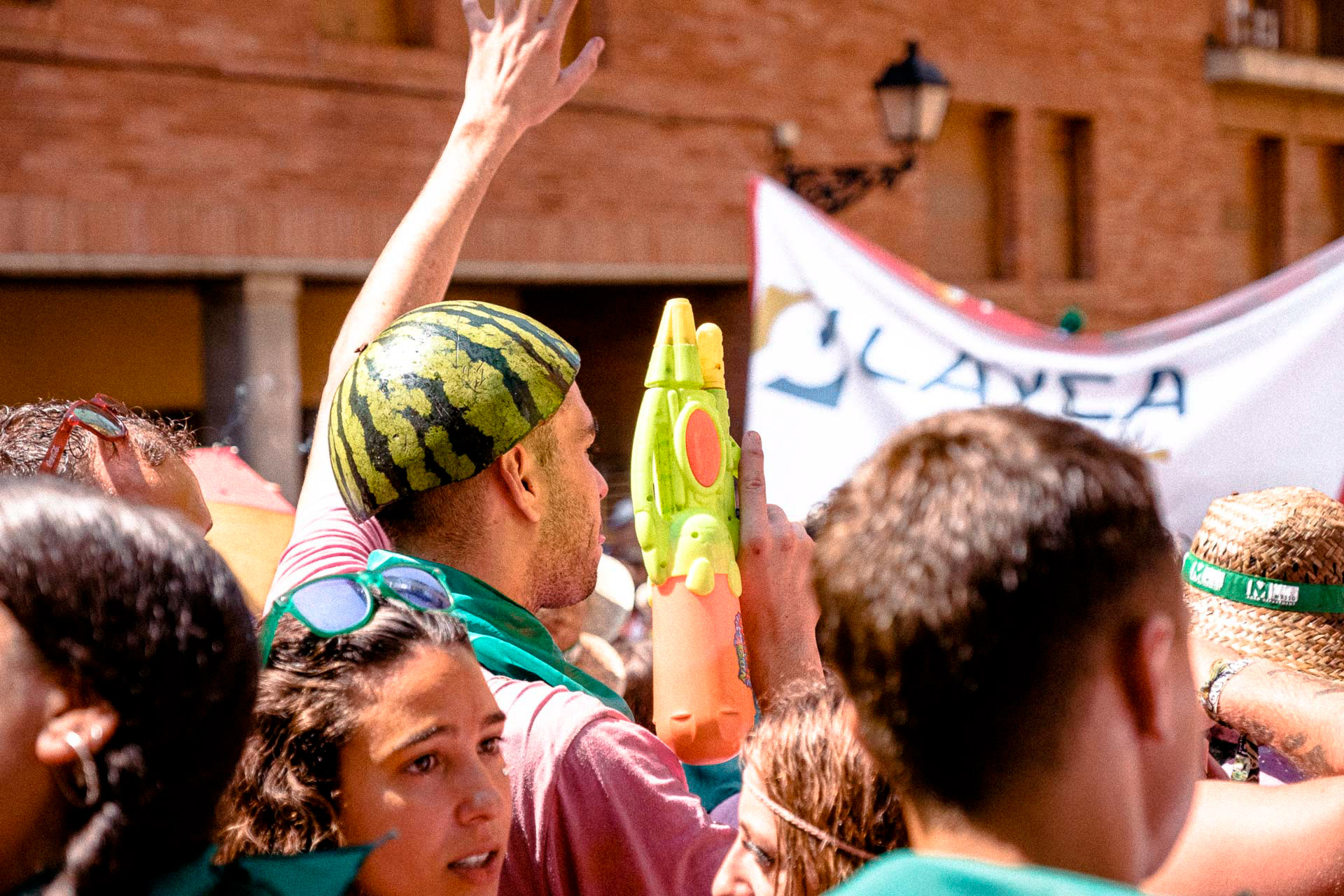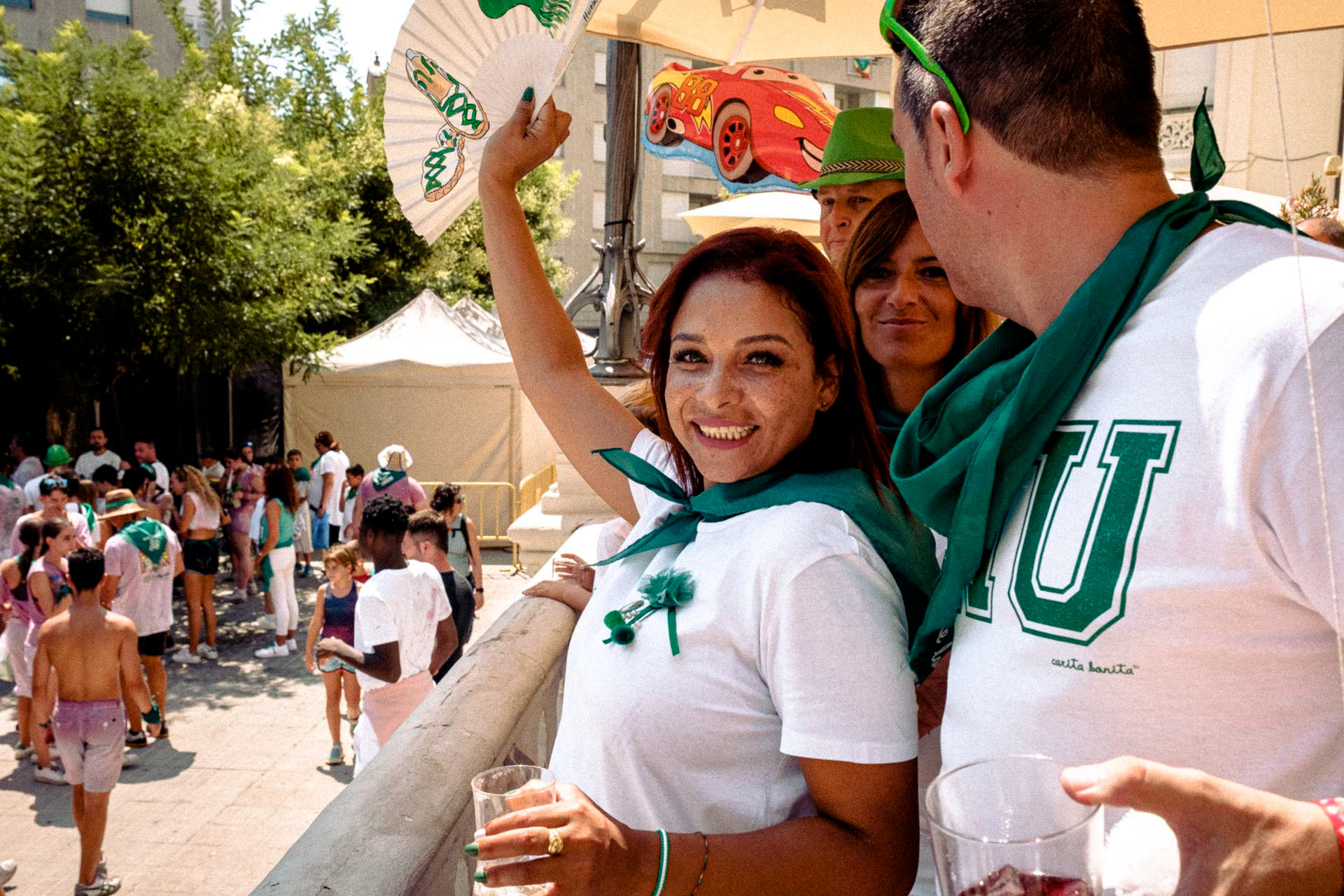Huesca is a small town in northern Spain, set in the middle of vast, sun-yellowed cereal plains. Tourists stop here for the night on their way to Zaragoza in the south, or to the Sierra de Guara and its limestone ramparts in the north. The arid heat makes the streets hardly passable in the afternoon. A heavy sleep seems to fall on the deserted city. A calm that can in fact be interpreted as waiting. Because once a year, in August, the city wakes up for the festival of its patron saint, San Lorenzo. The atmosphere is filled with an infectious enthusiasm. In the Plaza de la Catedral, thousands of people wearing the green and white uniforms of San Lorenzo wait impatiently for the traditional rocket launch that announces the start of the festivities. The white soon gives way to the red of the wine, which the participants throw into the air at will. The gathering also benefits the street vendors, who flock from northern Spain and set up camp on the outskirts of the city to sell their wares. The centuries-old San Lorenzo festival was not held during the two years of the COVID period. This 2022 edition was expected as the awakening from a long artificial coma.
